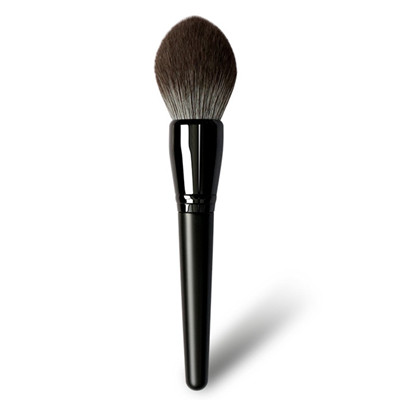The following is a detailed description of the regular thickness, thickened thickness and processing technology of the makeup brush copper ferrule:
►Thickness
Regular thickness: 0.4mm~0.6mm
Features:
Features:
- Suitable for mid-to-high-end makeup brushes, taking into account weight, hand feel and strength.
- Copper's natural ductility is better than aluminum, and it is suitable for complex shapes (such as embossment and carving).
Applications: ordinary high-end makeup brushes, art design makeup brushes
Thickened Thickness:0.7mm~1.0mm (customized requirements can reach 1.2mm)
Features:
Features:
- Heavy texture, strong resistance to deformation, suitable for large-sized brush handles or products that need to be used for a long time.
- Surface treatment (such as gold plating, antique aging) has a more lasting effect.
Applications: luxury makeup brushes, collection-level products, customized packaging that requires hand-carving.
►Processing
Raw material selection
Material:
Material:
- H65 brass (copper-zinc alloy, containing 65% copper) is commonly used, which combines ductility and strength.
- For high-end products, can choose phosphor bronze (more corrosion-resistant but expensive).
State: soft state (O state) or semi-hard state (H02), select according to molding requirements.
Stamping
Stamping
- Cold stamping: The copper strip is stamped into a tubular blank through a continuous die (the springback of the copper material needs to be controlled).
- Stretching process: 3 to 4 stretching steps are performed to gradually adjust the uniformity of the tube diameter and wall thickness (copper has high ductility, can reduce the number of annealing times).
Annealing treatment
- Temperature: 450℃~600℃ (copper recrystallization temperature is relatively high, so precise temperature control is required).
- Time: 1~3 hours (adjusted according to the composition and thickness of the copper material to eliminate work hardening).
- Protective atmosphere: nitrogen or vacuum annealing to prevent oxidation and discoloration of the copper surface.
Surface treatment
Polishing: Mechanical polishing or electrolytic polishing to achieve mirror or matte effect.
Plating:
Plating:
- Nickel plating/chrome plating: basic anti-corrosion layer (3-5μm).
- Gold plating/rose gold plating: decorative plating (0.5~2μm).
Oxidation aging: Chemical oxidation produces a verdigris or antique blackening effect (protective paint needs to be sprayed).
Spraying: Clear paint or colored paint (to protect the original color of copper or to achieve special colors).
Spraying: Clear paint or colored paint (to protect the original color of copper or to achieve special colors).
Finishing and assembly
- Engraving/etching: Laser engraving logo or pattern (power must be controlled to avoid burning through thin walls).
- Welding/riveting: copper ferrule and brush head connection (copper conducts heat quickly, high temperature deformation must be avoided).
- Sealing: crimping or thread sealing (copper is soft, strength must be controlled to prevent deformation).
Quality inspection
- Wall thickness uniformity: X-ray or ultrasonic inspection (copper tubes are prone to uneven local stretching).
- Corrosion resistance: Salt spray test (copper itself is corrosion-resistant, but the coating needs to pass a 24-72 hour test).
- Appearance consistency: Colorimeter to detect coating color, visual inspection of surface defects.
►Process Differences Between Copper Ferrules and Aluminum Ferrules
| Item | Copper | Aluminum |
| Annealing temperature | 450℃~600℃ | 300℃~400℃ |
| Difficulty of surface treatment | Easy to oxidize, requiring more stringent anti-rust pretreatment | The oxide film is stable and anodizing is more convenient |
| Forming springback | Low rebound rate and easy to control dimensional accuracy | High rebound rate, multiple corrections are required |
| Cost | High raw material cost (about 3 to 4 times that of aluminum) | Low cost, suitable for mass production |
| Environmental protection | 100% recyclable, but electroplating wastewater contains heavy metals | Recyclable, low anodizing pollution |
►Key process considerations
Anti-oxidation control:
During the whole process, bare copper should be kept away from moisture. Anti-rust oil or temporary passivation can be applied during the intermediate process.
Electroplating adhesion:
The copper surface needs to be primed with nickel (1-2μm) to prevent copper ion migration from causing the coating to peel off.
Risks of thin-wall processing:
When the thickness is less than 0.4mm, it is easy to crack during stamping, so it is necessary to use soft copper and increase the number of annealing times.
Cost optimization:
Using copper-clad steel or copper-aluminum composite pipes can reduce costs, but will sacrifice the texture of pure copper.
During the whole process, bare copper should be kept away from moisture. Anti-rust oil or temporary passivation can be applied during the intermediate process.
Electroplating adhesion:
The copper surface needs to be primed with nickel (1-2μm) to prevent copper ion migration from causing the coating to peel off.
Risks of thin-wall processing:
When the thickness is less than 0.4mm, it is easy to crack during stamping, so it is necessary to use soft copper and increase the number of annealing times.
Cost optimization:
Using copper-clad steel or copper-aluminum composite pipes can reduce costs, but will sacrifice the texture of pure copper.
►Industry Trends
- Lightweight design: Ultra-thin copper tubes (0.3mm) are strengthened by increasing the zinc content.
- Retro craft revival: Hand-hammering, acid etching and other processes are applied to limited edition products.
- Environmentally friendly alternatives: Cyanide-free electroplating and water-based paint spraying technologies are gradually becoming popular.
►The advantages and disadvantages of copper ferrules
| Advantages | Disadvantages |
| High-quality texture, suitable for luxury goods | High cost |
| Good ductility, can achieve complex shapes | Easy to oxidize during processing, need additional protection |
| Corrosion resistance is better than ordinary steel | The electroplating process is complex (multi-layer plating is required) |
| Good thermal conductivity, suitable for brushes that need to dry quickly | Heavy and less portable |
The above process parameters can be adjusted according to specific requirements (such as copper pipe diameter, surface effect).







